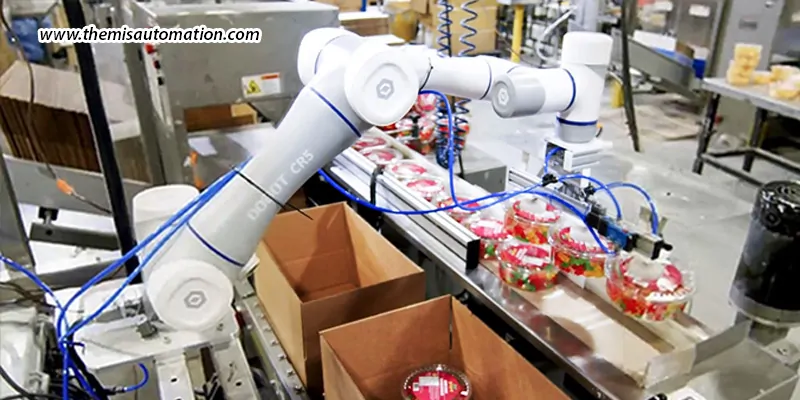A few years ago, mornings looked different. Workers hurried to start machines, supervisors raced to monitor production schedules, and unforeseen breakdowns led to unpredictable delays. But today, automation takes the lead — quietly, effectively, and nearly invisibly. What used to be a chaotic beginning to the day has transformed into a smooth rhythm of productivity. This change is not merely a tale of one facility. Manufacturers worldwide are realizing that efficiency is not solely about accelerating production; it’s about minimizing waste, enhancing accuracy, empowering employees, and ensuring that every process contributes value. At the core of this change is industrial automation.
The hidden cost of inefficiency
Before automation entered the scene, inefficiency was the unspoken cost burden in manufacturing. Downtime caused by unexpected equipment malfunctions, human mistakes in repetitive tasks, and inconsistent quality all eroded profit margins. Efficiency was then an aspiration, yet an aspect that often seemed unattainable due to the inherent unpredictability of human-driven operations. Even a single minute of downtime on a production line today can result in significant losses for large companies. In industries like pharmaceuticals or electronics, the financial impact can be even greater, as every delayed batch risks breaching strict delivery deadlines. Thus, efficiency is not merely about “working faster”; it’s about working smarter, with fewer mistakes, reduced waste, and enhanced reliability.
How automation has changed the game
Automation does not merely substitute human labour with machines; it transforms efficiency across various dimensions.
- Consistency over speed: In manual manufacturing, two individuals assembling the same component may yield slightly different outcomes. Automation guarantees uniformity – every weld, cut, or assembly is the same. This uniformity minimizes rework and ensures superior quality at scale.
- Predictive capabilities: With sensors and interconnected systems, automation enables machines to communicate with each other and foresee failures before they occur. A conveyor belt motor exhibiting signs of wear can trigger an alert, arrange maintenance, and prevent an expensive shutdown.
- Optimized resource utilization: Contemporary automation not only enhances labour productivity but also optimizes energy use, raw material consumption, and space management. For instance, intelligent automation systems can automatically shut down idle machinery, conserving energy during periods of low demand.
Solution providers like Themis Automation, among the top automation companies in Gujarat, enable industries to adopt these advantages seamlessly – ensuring consistency, predictive capabilities, and optimized resource utilization at scale.
IoT – The core of industrial automation
The digital aspect of industrial automation, frequently driven by IoT, is where efficiency advances to a new level. Data gathered from sensors throughout the facility creates a real-time digital twin of operations. Managers can observe in real-time which machines are underperforming, where energy surges are happening, and how materials are moving through the system. This transparency enables immediate adjustments. For example, if a bottleneck arises in assembly, modifications can be implemented right away, rather than discovering the problem days later when production reports are submitted. In this regard, efficiency shifts from being reactive to proactive. Instead of merely addressing issues, factories can foresee and avert them.
Is automation replacing humans?
Interestingly, automation is frequently seen as a means to replace human workers. However, in the majority of successful factories, the focus is not on replacement but rather on enhancement. For instance, consider a packaging facility where robots are responsible for the repetitive task of assembling boxes. Employees who previously engaged in this monotonous work are now being trained to oversee robotic operations, resolve issues, and interpret data. Instead of spending eight hours bending over cardboard, they are utilizing their judgment and creativity in roles that automation cannot fulfil. Here, efficiency is not solely quantified by units produced per hour; it is also assessed through worker satisfaction, fewer mistakes, and the capacity of human teams to concentrate on more valuable tasks.
The balance between man and machine
Despite the clear advantages, automation is not a magical remedy. Effective implementation requires a considerable initial investment, training for the workforce, and a shift in organizational culture. Companies that succeed with automation perceive it as a collaboration between humans and technology rather than a substitution. Machines are tasked with repetitive, dangerous, and data-heavy activities, while humans contribute oversight, creativity, and problem-solving abilities that technology cannot imitate. This collaboration fosters a level of efficiency that is both sustainable and comprehensive, encompassing not just quicker production but also improved employee morale, safer working environments, and a culture of ongoing innovation that fortifies manufacturing over time.
Efficiency that extends beyond production
What begins at the shop floor does not remain confined there; enhanced efficiency through automation generates ripple effects throughout the entire value chain. Reduced lead times enable customers to receive products more quickly, while less waste results in improved margins and more sustainable production methods. Increased reliability fortifies relationships with suppliers and clients, nurturing trust and consistency. Concurrently, global competitiveness empowers manufacturers to expand operations to satisfy international demand without raising costs. In a landscape where speed, customization, and reliability are essential, automation guarantees that manufacturers can deliver smoothly while safeguarding resources and averting workforce fatigue.
Automation has evolved beyond mere machinery on production lines; it embodies a philosophy of efficiency woven into every aspect of manufacturing. By ensuring uniformity, reducing downtime, empowering employees, and anticipating issues early, industrial automation transforms the concept of efficiency. For manufacturers, it signifies more than just staying relevant; it cultivates adaptive, evolving factories where efficiency arises organically by design. The true indicator of its success is found in its subtlety: seamless production, optimized resources, and flourishing workers, replacing previous disorder with the steady rhythm of a future-ready industry.

